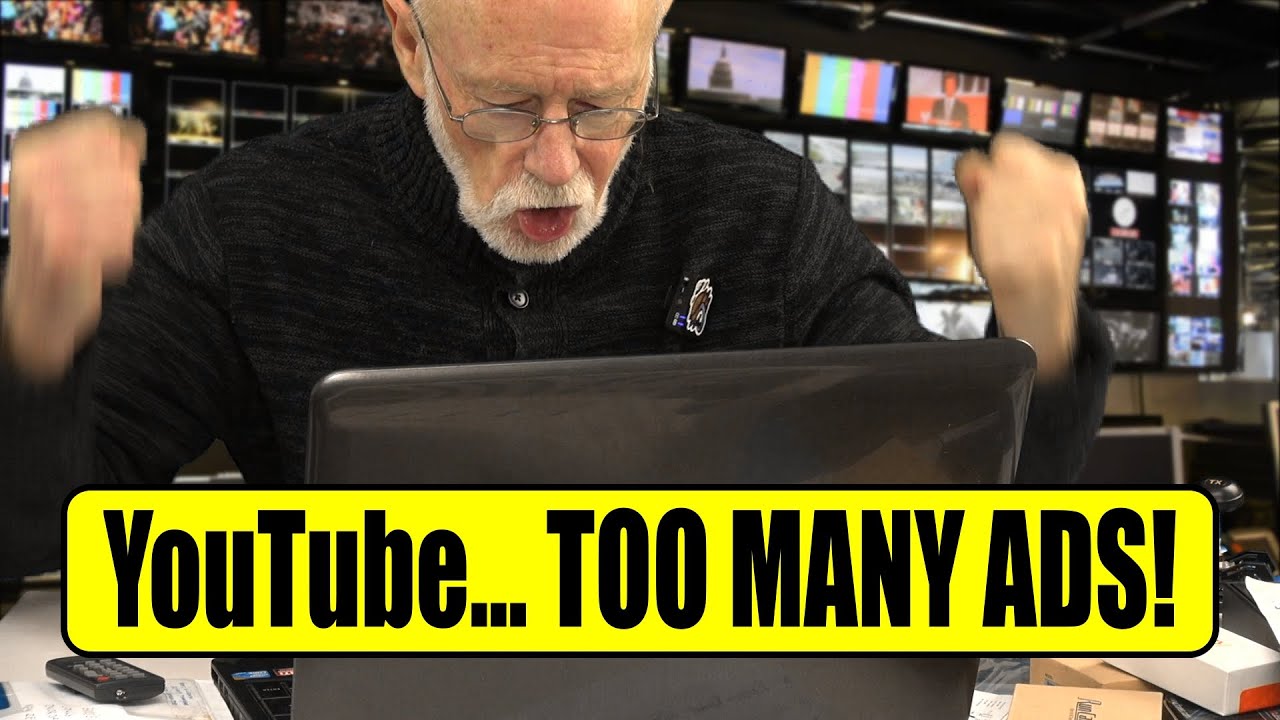YouTube has become a staple in our daily lives, serving everything from entertainment to education. But as the platform has grown, so has the conversation about its ads. Are they really getting worse? This question is on the minds of many users, especially as they navigate increasingly frequent interruptions while watching their favorite videos. In this post, we’ll explore the evolution of YouTube ads, the impact on viewers, and what it all means for the future of content consumption.
The Evolution of YouTube Ads

When YouTube first launched in 2005, ads were a novel concept—simple, short, and relatively infrequent. Fast forward to today, and the landscape has dramatically changed. Let’s break down this evolution:
- 2005-2010: The Beginnings
- Ads were typically 15-30 seconds long.
- Primarily displayed before video content (pre-roll ads).
- Limited targeting options.
- 2011-2015: Rise of the Advertiser
- Introduction of skippable ads, giving viewers more control.
- Increased use of display ads and overlay ads.
- Advertisers began to explore more creative approaches.
- 2016-Present: The Overload
- Ads have become shorter (often 6 seconds) but more frequent.
- Introduction of mid-roll ads, disrupting longer videos.
- Targeting algorithms have become sophisticated, but sometimes intrusive.
In addition to these phases, a notable aspect of this evolution is the rise of sponsored content and influencer marketing. Brands now partner directly with creators, blurring the lines between traditional advertising and genuine content. While this approach can feel more authentic, it also raises questions about transparency and trust in the platform.
As we reflect on this evolution, it's clear that while YouTube ads have become more prevalent and diversified, the user experience has transformed in ways that may not always be for the better. The ongoing debate about ad annoyance continues to shape how both viewers and creators approach content on this platform.
Also Read This: How to Rotate a Video on YouTube
Current Trends in YouTube Advertising
YouTube advertising is constantly evolving, and staying on top of the current trends is crucial for marketers and content creators alike. Let’s break down some of the most significant trends shaping the landscape of YouTube ads today:
- Short Form Ads: With the rise of YouTube Shorts, advertisers are shifting towards shorter, more engaging ads. These 6-15 second clips cater to the fast-paced consumption habits of viewers, ensuring that brands can capture attention quickly.
- Interactive Ads: Engagement is the name of the game! Interactive ads, such as quizzes or polls within the video, allow viewers to participate. This not only enhances user experience but also increases retention rates.
- Influencer Collaborations: Brands are teaming up with YouTube influencers to create authentic content. These collaborations provide a sense of trust and relatability, significantly impacting purchasing decisions.
- Targeted Advertising: Advanced algorithms allow for precision targeting based on user behavior and interests. Advertisers can now reach specific demographics, making their campaigns more effective.
- Ad Personalization: Customized ads based on individual viewing history are becoming more common. Personalized ads can resonate better with viewers, leading to higher engagement and conversion rates.
These trends not only reflect the changing dynamics of digital marketing but also showcase how brands are adapting to meet the evolving preferences of their audiences.
Also Read This: What Happened to Victory Outdoor Services on YouTube? Latest Updates and Changes
User Experience and Feedback
User experience on YouTube has become a hot topic, especially regarding advertising. Viewers' feedback is pivotal in shaping how ads are perceived and how they impact the overall platform experience.
Many users express frustration over the increasing frequency and intrusiveness of ads. Here’s what we often hear:
- Ad Overload: Some users feel bombarded by too many ads, leading to a negative viewing experience.
- Repetitive Ads: Seeing the same ad multiple times can be irritating, causing viewers to tune out or even develop a dislike for the brand.
- Skip Button Challenges: While the “Skip Ad” button offers relief, some users find themselves waiting through unskippable ads, which can be frustrating.
Interestingly, not all feedback is negative! Many users appreciate:
- Quality Content: Ads that are creative and entertaining can enhance the viewing experience instead of detracting from it.
- Relevance: Targeted ads that align with viewer interests often receive praise, as they provide value rather than interruption.
Ultimately, balancing effective advertising while enhancing user experience is crucial for YouTube's continued success. The platform must listen to its users to refine its advertising strategies while keeping engagement high.
Also Read This: Can You Access YouTube with a Firestick? Features and Setup Guide
5. Comparative Analysis with Other Platforms
When we think about online advertising, YouTube is often the first platform that springs to mind. However, it’s essential to compare it with other giants like Facebook, Instagram, and TikTok to get a full picture of where YouTube stands in the advertising game.
One major factor to consider is user engagement. For instance:
- YouTube: With an average view duration of around 30 minutes per session, users are often more engaged with video content.
- Facebook: The average time spent on Facebook is about 19 minutes, which indicates less engagement with ads.
- Instagram: Users spend roughly 29 minutes daily, but its focus is more on visual storytelling, making ad formats different.
- TikTok: The average user spends about 52 minutes a day, with ads feeling more integrated into the content flow.
When we dive deeper into ad formats:
| Platform | Ad Formats | Cost per Click (CPC) |
|---|---|---|
| YouTube | Skippable, Non-skippable, Bumper Ads | $0.10 - $0.30 |
| Image, Video, Carousel Ads | $0.50 - $2.00 | |
| Stories, Feed Ads, Reels | $0.70 - $3.00 | |
| TikTok | In-feed, Brand Takeover, Hashtag Challenge | $1.00 - $3.00 |
This comparative analysis reveals that while YouTube has its strengths, such as longer engagement times and a variety of ad formats, other platforms are also evolving rapidly. Advertisers must weigh these factors to determine where to allocate their budgets effectively.
Also Read This: How to Upload Videos to YouTube from Your iPhone
6. Future Predictions for YouTube Ads
The future of YouTube ads looks intriguing, especially considering the rapid evolution of digital marketing. So, what can we expect in the coming years?
Firstly, we might see a surge in personalization. As algorithms become more sophisticated, ads will likely become hyper-targeted, catering to individual user preferences. Imagine watching a video and seeing an ad perfectly tailored to your recent interests!
Secondly, interactive ads are on the rise. YouTube has already experimented with formats that allow viewers to engage directly with ads. This might include shoppable videos where you can purchase items featured in the ad with just a click. This integration can enhance user experience and drive higher conversion rates.
Additionally, with the growing trend of short-form content, YouTube might invest more in 15-second ads similar to TikTok, ensuring they catch the viewer's attention without requiring a significant time commitment.
Finally, we can expect an increase in augmented reality (AR) ads. As more users adopt AR technology, YouTube could introduce immersive ad experiences, allowing users to interact with products in a virtual environment.
In summary, the future of YouTube ads is likely to be more engaging, personalized, and interactive. As advertisers adapt to these changes, it will be exciting to see how they harness these innovations to create impactful campaigns.
Are YouTube Ads Getting Worse?
YouTube has become a staple platform for video content, providing entertainment, education, and music to millions worldwide. However, a growing concern among users is whether YouTube ads are getting worse over time. As the platform evolves, so do the advertising methods employed by marketers, which can significantly affect the user experience.
Several factors contribute to the perception that YouTube ads are declining in quality:
- Increased Frequency: Users often report seeing the same ads repeatedly, leading to ad fatigue.
- Irrelevant Targeting: Many viewers find ads that do not align with their interests, causing frustration.
- Longer Ads: The rise of unskippable ads has made the viewing experience less enjoyable.
Moreover, a comparison of different types of ads on YouTube reveals significant variations in user reception:
| Ad Type | Viewer Reception | Common Complaints |
|---|---|---|
| Skippable Ads | Generally Positive | Some ads are too short or irrelevant |
| Non-Skippable Ads | Negative | Causes interruptions, often seen as intrusive |
| Overlay Ads | Neutral | Can be ignored but may obstruct content |
In conclusion, as YouTube continues to adapt its advertising strategies, users are left wondering if the quality of ads is diminishing. While some ads can be relevant and engaging, the increasing frequency, irrelevance, and duration of ads can lead to a less enjoyable viewing experience.
 admin
admin








